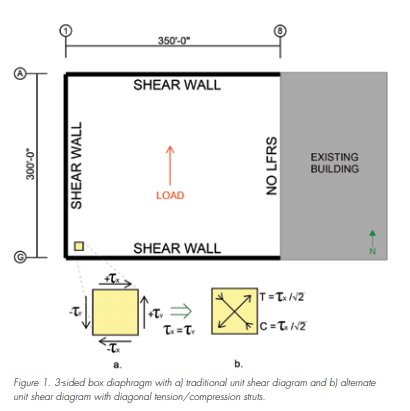StrEng007
Structural
- Aug 22, 2014
- 543
Most of my design work has been located in high wind zones and I've been able to (for the most part) require well defined lateral systems. I haven't done any strip mall designs except for outparcel/stand alone buildings located within these types of commercial properties.
As a general question for those who specialize in strip mall buildings, where are you drawing your lateral system from regarding longitudinal winds? It seems like the traditional strip mall contains storefront for a majority of the front elevation. I image the ones that have an overhang and columns at 20ft - 30ft centers use some sort of portal frame. Are the rest all being designed as 3-sided diaphragms?
This is general curiosity so I don't have any drawings to share... I'm sure we've all been that person waiting for a take-out order while starting at the underside of an OWSJ building (always easy to recognize others who are also in the building trade).
As a general question for those who specialize in strip mall buildings, where are you drawing your lateral system from regarding longitudinal winds? It seems like the traditional strip mall contains storefront for a majority of the front elevation. I image the ones that have an overhang and columns at 20ft - 30ft centers use some sort of portal frame. Are the rest all being designed as 3-sided diaphragms?
This is general curiosity so I don't have any drawings to share... I'm sure we've all been that person waiting for a take-out order while starting at the underside of an OWSJ building (always easy to recognize others who are also in the building trade).


